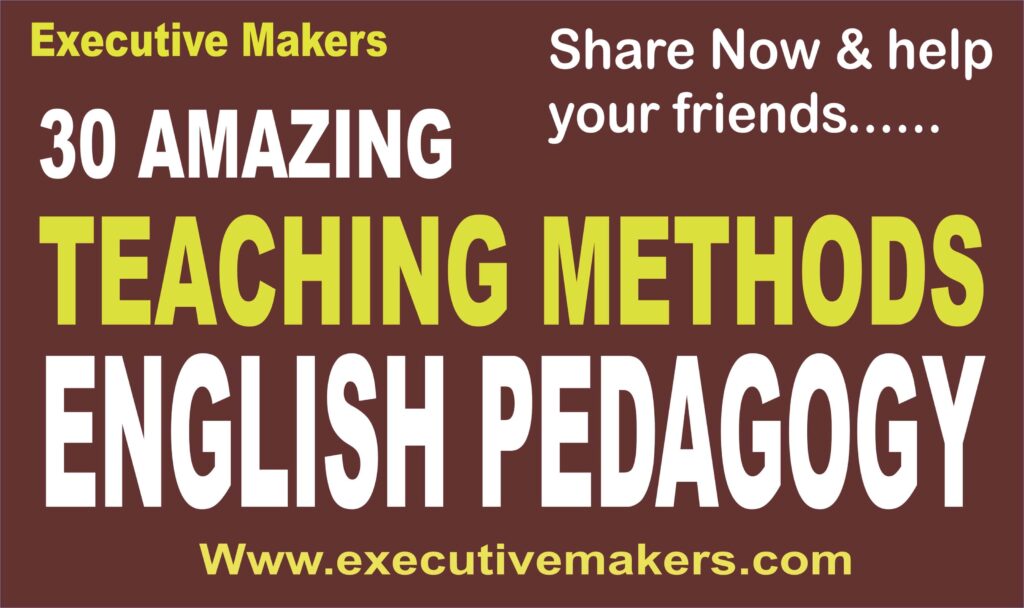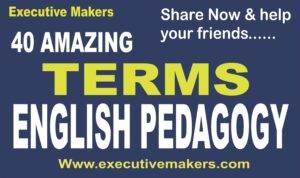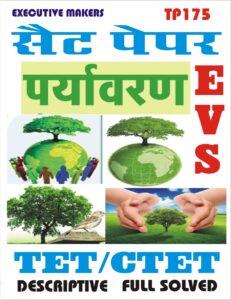Blog, ENGLISH, IN ENGLISH, PEDAGOGY
30 Amazing Teaching Methods of Pedagogy
30 Amazing Teaching Methods of Pedagogy
30 IMPORTANT TEACHING METHODS FOR ENGLISH PEDAGOGY
SPECIAL FOR TEACHING EXAMS
CTET, TET, SUPER TET, KVPS
The Total Physical Response (TPR):
This is an approach to teach a second language, is based upon the way that children learn their mother tongue. It is based on listening and this is linked to physical actions. TPR works by having the learner respond to simple commands such as stand up, open the window. The method stresses the importance of aural comprehension. This method is suitable only for beginner levels, now everything can be taught by it and it is not suitable in classes that have a large number of learners.
30 Amazing Teaching Methods of Pedagogy
The communicative Language Teaching (CLT) :
This method enables the learner to communicate effectively in the various situations. This approach is based on the idea that learning language successfully comes through having to communicate real meaning. When learners are involved in real communication, they learn to use the language.
The contents of CLT courses are functions such as inviting, suggesting, complaining or notions such as the expression of time, quantity and location. Classroom activities guided by the communicative approach are characterised by trying to produce meaningful and real communication at all Levels.
There is more emphasise on skills, lessons are more learner centered. The teacher acts as a facilitator and learners are active participants in the construction of knowledge , rather than passive recipients of information provided by the teacher or the textbook.
30 Amazing Teaching Methods of Pedagogy
Community Language Learning (CLL):
This method was founded by Charles Curran. In this method, attempts are made to build strong, personal links between the teacher and the learner so that there are no blocks to learning. There is much talk in the mother tongue which is translated by the teacher for repetition by the student.
One of the key ideas is that it is the learners who determine what is to be learned, so that the role of the teacher is that of a facilitator. In the basic form of CLL, 8-10 learners sit in a circle with a small portable tape recorder inside the circle. The teacher, referred to as knower, stands outside the circle. When a learner has decided on something he/she calls the knower and whispers what he/she wants to say in his mother tongue.
The teacher whispers the equivalent utterance in English, which the learner attempts to repeat with the rest of the group listening. When the knower is satisfied, the learner records the utterance. This process is repeated by other learners till a kind of dialogue is recorded. The knower replays the recording and transcribes it on the board.
This is followed by analysis and questions from the learners. This approach has been criticized as it can involve only a few students. The teacher has to be non – judgmental and highly proficient in the target language and the approach is more suitable for adult learners than children.
30 Amazing Teaching Methods of Pedagogy
The Immersion Method:
Immersion means being submerged or surrounded by something. This is a direct language learning approach that has no bilingual support and believes that either one should learn the language properly or not at all.
The successful acquisition of a foreign language depends primarily on three factors: the intensity of contact, the duration of teaching and the type of teaching method and the immersion method has proved to be the successful in all three areas. It is mainly a second language learning approach to help learners focus towards the target language by exposing them to real life situations wherein the learners can choose formal or informal language as required.
In this approach, technology helps in providing for direct language learning and listening to English songs and watching English movies, helps learners get accustomed to the English language including the use of words in sentences, using body language and pronouncing accurately.
30 Amazing Teaching Methods of Pedagogy
Task Based Language Learning (TBL):
This gives learners the opportunity to use English in the classroom just as they use their own languages in everyday life. The focus of the teaching is on the completion of a task which is interesting to the learners. TBL is based on three stages.
At the pre task stage, the topic is introduced by the teacher and the learners engage in activities that either help them to recall words and phrases that will be useful during the performance of the main task or to learn new words and phrases that are essential to the task. At the next stage, the learners in pairs or groups plan and perform the task such as a reading task, a listening task or a problem solving task. Language focus and feedback is the final stage.
30 Amazing Teaching Methods of Pedagogy
The Natural Approach:
This is developed by Tracy Terrell and supported by Stephen Krashen. This is a language teaching approach which stresses the similarities between learning the first and second languages. Learners are initially exposed to meaningful language, nor forced to speak until they are ready. This approach is designed to develop basic communication skills, with more emphasis given to comprehension rather than production.
The Lexical Approach:
This is developed by Michael Lewis and focuses on the learning and teaching of vocabulary items which are described as word chunks or word combinations. The basic principle of the lexical approach is that lexis is central in creating meaning and grammar plays a managerial role.
More time should be spent in helping learners develop their vocabulary and less time on grammatical structures. This approach is based on a computer analysis of language which identifies the most common, useful words in the language or their various uses.
Synonym:
This is a word or phrase that means exactly ( or nearly the same) as another word or phrase.
Examples: shut is the synonym of close and happy is a synonym for elated.
Antonym:
This is a word that is the opposite meaning of another.
Example: The antonym for messy is neat.
Metonym:
This is a word, name or expression used as a substitute for something else with which it is closely associated.
Example: crown is the metonym of royalty.
30 Amazing Teaching Methods of Pedagogy
Homograph:
This is a group of words that are spelled the same way but have different meanings. Homo means same and graph is related to writing.
Examples: desert means a hot, arid region and also mean to leave.
Homophones:
This is a group of words that have the same sound and are pronounced the same way but different in meaning or spelling.
Example: peace and piece.
Homonyms:
These are two or more words that have the same sound but different spelling and meaning.
Examples:
deer and dear or their and there.
30 Amazing Teaching Methods of Pedagogy
Note: Homophones are a type of homonym that also sound alike and have different meanings but have different spellings.
Note: Heteronyms are a type of homograph that are also spelled the same and have different meanings but sound different.
30 Amazing Teaching Methods of Pedagogy
| Same Sound | Different Meanings /
Different Spellings |
Same
Spellings |
Different Meanings/ Different
Sound |
|
| Homonyms | Homophones |
Homographs
|
Heteronyms | |
| See (eye) | See | See | n/a | n/a |
| Sea | Sea | Sea | n/a | n/a |
| To | To | To | n/a | n/a |
| Too | Too | Too | n/a | n/a |
| Two | Two | Two | n/a | n/a |
| There | There | There | n/a | n/a |
| Their | Their | Their | n/a | n/a |
| Lie Untruth | Lie | n/a | Lie | n/a |
| Lie
Lie down |
Lie | n/a | Lie | n/a |
| Tear | n/a | n/a | Tear | Tear |
| Tear | n/a | n/a | Tear | Tear |
Hyponym:
This is a word with a broad meaning that more specific words fall under. It is a superordinate.
Examples: Pigeon, Crow, Eagle are all hyponyms of bird.
Meronym: This is a word denoting an object which forms part of another object.
Examples: Roof is a meronym of building and Tree is meronym of forest.
30 Amazing Teaching Methods of Pedagogy
Capitonym:
This is a word whose meaning changes, based on whether or not it is capitalized. They have the same spellings but different meanings. Capitonyms can be nouns, verbs or adjectives and feature one word as a common noun and the other as a proper noun.
Examples:
March (The month), march (To walk)
Titanic (The ship), titanic (gigantic)
China (The country), china (as in porcelain, ceramic material)
Compound:
These words are of three types:
(1) Closed form: When two words are joined together to create a new meaning.
Examples: makeup, notebook
(2) Hyphenated form: When the words are joined together by a hyphen.
Examples: daughter-in-law, son-in-law.
(3) Open form: When the words are opened but when read together, a new meaning is formed.
Examples: post office, full moon.
30 Amazing Teaching Methods of Pedagogy
Contractions:
These words are formed when two words are contracted or put together and an apostrophe is added to replace the omitted letters.
Examples: aren’t, can’t, doesn’t, won’t, I’ve, you’ve, we’ve, they’ve, I’m, you’re, he’s, it’s, she’ll, it’ll, who’ll.
Connotation:
This is the associations made with words that have the literal or dictionary definition.
Example: ‘the autumn leaves were falling’ Here autumn is used to signify that something is coming to an end.
Denotation: This refers to the use of the literal meaning of a word.
Example: ‘They built a house’ Here house is meant as in a building where a family lives.
Idioms: They are words, phrases or expressions that cannot be taken literally and, when used in everyday language, they have a meaning other than the basic one found in the dictionary. Every language has its own idioms.
Example: ‘It’s raining cats and dogs’ means ‘it’s raining very heavily’.
Proverb: This is an old and short saying in general use, stating a general truth or piece of advice.
Example: ‘Pride comes before a fall’ means that the moment you start feeling very pleased with yourself, is the moment that things start to go bad.
30 Amazing Teaching Methods of Pedagogy
Phrasal Verb:
This is the combination of a standard verb such as make or put with one or two particles.
Examples: pull together, fall through, put down to etc.
Concept Maps:
They provide a visual representation of information about a word.
Examples: ‘amphibian’ can be mapped as follows:
moist skin, cold-blooded
Word Cards:
They can be sorted by semantic categories.
Examples: For the theme ‘circus’ the teacher can make word cards related to the theme such as clown, ring master.
Word Splash:
This is a collection of key words chosen from a passage or chapter that learners are about to read. This strategy gives them a chance to relate the new words or concepts to the main topic of the reading.
Crosswords:
They involve several useful skills, including vocabulary, reasoning, spelling and word attack skills. To solve a crossword puzzle, a learner must be able to identify and understand the terms being used.
Brainstorming:
This gives a key word and new vocabulary is based around it.
Examples: Learners can be given a root word and asked to use prefixes and suffixes to make new words. By brainstorming all the words they can make with the root.
Examples: For the root word ‘happy’ learners could list the words unhappy, happiness, happily, unhappily, happier etc.
Traditional Grammar:
This is the collection of ideas about grammar that Western societies have received from Greek and Roman sources. The main characteristics of traditional grammar relate to usage, diction and style.Basic rules govern the appropriate use of each punctuation mark for correct punctuation.Common internal punctuation marks include the full stop, question mark, comma, colon, semicolon, dash and quotations. This grammar mandates that a sentence contain both a subject and a predicate. A sentence is incomplete without a subject and a predicate.
30 Amazing Teaching Methods of Pedagogy
Prescriptive Grammar: This follows the tradition of the classical grammars of Sanskrit, Greek and Latin so that subsequent generations could understand sacred texts and historical documents. Prescriptive grammar remains common in pedagogy and foreign language teaching. This is no longer popular with modern academic linguistics. Prescriptive grammar rules include that the subject of a sentence must agree with the verb.
For example, much is used for uncountable nouns and many for countable nouns or the sentence must begin with a capital letter and so on.
Descriptive Grammar: This is the systematic study and description of a language. It is actually used by speakers and writers. This grammar attempts to describe actual usage and is interested in what speakers of a language actually say and what they accept as possible in the language.
For instance ‘I did not do nothing’ as a double negative is used in many dialects of English and considered as grammatically correct in Descriptive grammar. Modern descriptive grammar aims to correct the errors of traditional grammar.
30 Amazing Teaching Methods of Pedagogy
30 Amazing Teaching Methods of Pedagogy
30 Amazing Teaching Methods of Pedagogy
30 Amazing Teaching Methods of Pedagogy
30 Amazing Teaching Methods of Pedagogy
Download Books, Notes, Test Papers, Sample Papers,
Speed Test Papers in Hindi as well as in English.
VISIT US
Thousands of customers are full satisfied.
Target No-1 Classes
(a unit of )
Executive Makers Pvt. Ltd.
30 Amazing Teaching Methods of Pedagogy
V192 Amazing Social Science Notes
V189 Amazing Class 6th Biology Notes Our Environment NCERT
V169 GENERAL STUDIES ONE LINER






